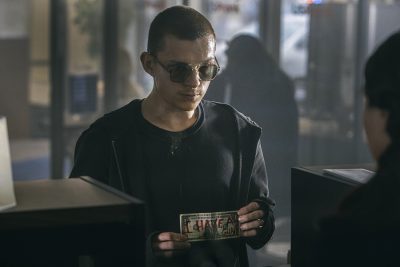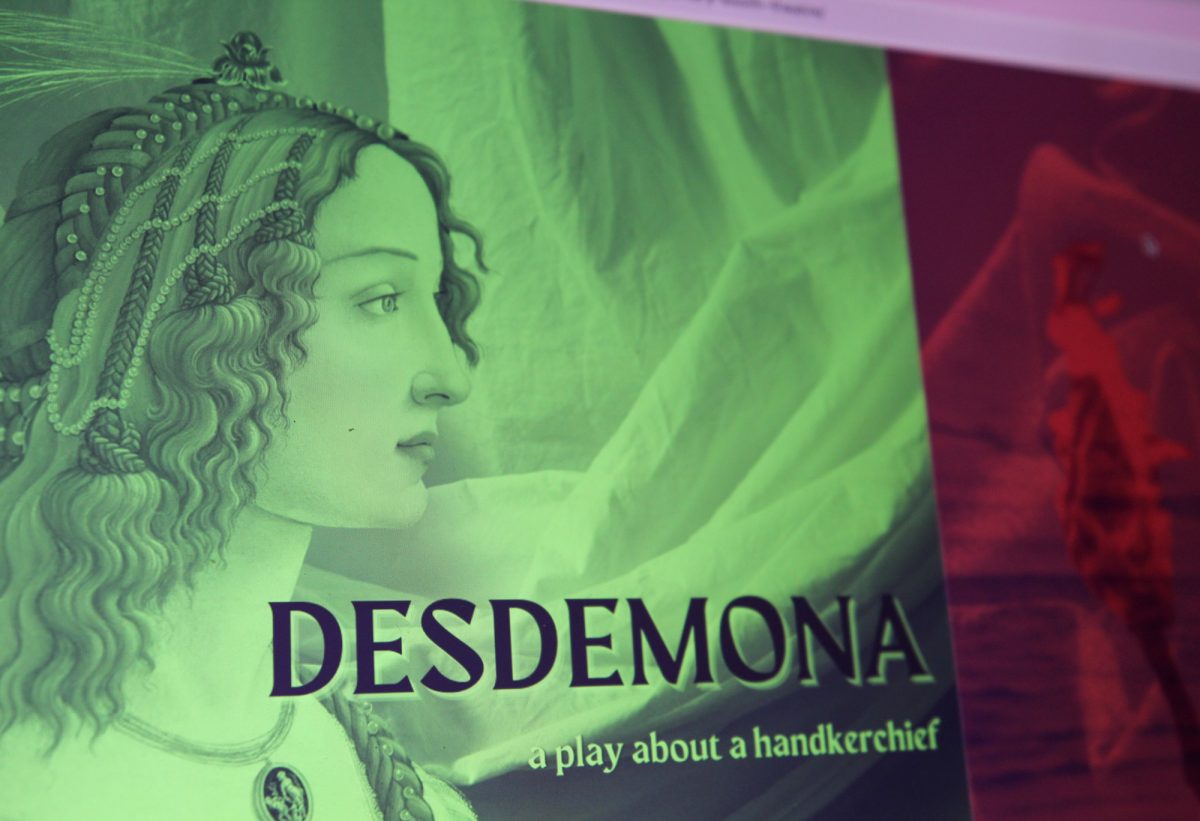An aboriginal tale of crime, love, war and post-traumatic stress disorder, “Cherry,” the latest from Marvel Studios directors Joe and Anthony Russo, attempts to be a modern-day mash-up of “Taxi Driver” and “Jarhead.” The film is a highly stylized take on one man’s process of coping with PTSD after serving in Iraq and the repercussions it has on the people around him. It is predominantly a work with little substance but a plethora of substance abuse.
“Cherry” stars Tom Holland as an unnamed Iraq veteran and opioid addict and is based on the memoir of the same name by Nico Walker. Holland’s take on the complex and sarcastic Cherry is brilliant, there is no way around that. Holland performs, or more appropriately transforms himself, through a methodical process to not just represent the character but to become him. Holland is funny, dark, precarious, lazy, but most of all, he is real. Holland’s ability to entice feelings is something remarkable for the young actor, who is by far at his career-best in this film.

On the topic of performances, there is another positive in the light of Ciara Bravo, who plays Holland’s love-interest, as well as Michael Gandolfini, who plays Cousin Joe, a friend of Holland’s character. Bravo, as with Holland, performs with her body and not her words, screaming in pain in light of her beloved’s painkiller addiction and then falling into an addiction herself. It’s traumatic yet touching how two people who have never worked together can portray such a unique sense of bonding and power. Gandolfini, on the other hand, represents the comedic relief of the film. His character doesn’t entail transformative or methodical acting, and he relies on wit and quips to balance the seriousness of the film.
“Cherry” seems to be a film unlike any other from the very beginning. A crane shot swings in as we are pulled into Cleveland through a red color-grade, landing on Holland as he exits a minimalistic house, his head buzzed, his face covered in scars and his profane and cynic voice-over booming in the background. This image is almost pleasing as Holland enters proudly into the frame. His presence saves the film from further failure, as slow-motion dutch-angles and framing are overused as the film goes on.
“Cherry” is structured in six parts — “Prologue,” “When Life was Beginning, I Saw You,” “Basic,” “Cherry,” “Home” and “Epilogue.” The prologue and epilogue serve their entitled purpose of introducing the audience to the character and then closing out the film, but they are nothing more than that.
To speak positively, though, the film’s strongest feature is its portrayal of the Iraq War and combat seen through Holland’s role as a medic. The section also entitled “Cherry” utilizes a wide frame and picturesque landscapes to help immerse the viewer into the combat and the emotion of the period. Cameras move swiftly through deserts as Holland and friends dodge bullets and save lives, to an extent at least. Quite literally, “Cherry” from “Cherry” is by far some of the best war footage depicted in the past decade.
This is unfortunate because the other parts of the film suffer from an overdose of style and illusion. Style is never a bad thing when it comes to film. A certain style helps filmmakers distinguish themselves in their works and can give a film a sense of feeling. This can be seen with the different camera angles and framing during the basic training segment of the film. A 4:3 frame creates the claustrophobic and “no-escape” feeling signifying Holland’s character’s state of mind — more or less, the actual reality of basic training. The style becomes overdone, though, along with the Russo brothers’ use of a red filter to highlight transitions and irrelevant slow-motion sequences. Such techniques may have been utilized to help depict Cherry’s state of mind, when on drugs or not, but there comes a point when style becomes favored over the actual substance of the film.
As mentioned earlier, “Cherry” at its core comes off as a college-aged “Taxi Driver” due to Holland’s blatant physical look and behavior, as well as the film’s gritty violence. Herein lies what “Cherry” fails at the most: pretending to be something it is not.
“Cherry” beholds an incredible cast and stellar performances but is burdened by its prioritization of imaginative and illusory appeal over a contextual foundation. Holland achieves a grand mastery of methodical acting, but the film fails to captivate an audience.
























































































































